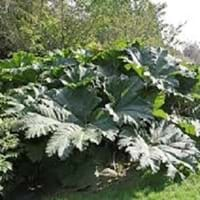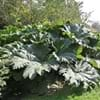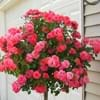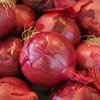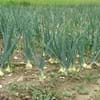Life Span
Perennial
Perennial
Origin
Hybrid origin, Eastern Asia, India, Nepal, China
Australia
Types
Victoria Rhubarb
Colorado Red Rhubarb
Turkish Rhubarb
Not Available
Number of Varieties
Not Available
Habitat
gardens, Grassland, Humid climates, Tropical regions, Urban areas
Scrubs, tussock grasslands, Upland savannas
USDA Hardiness Zone
3-7
10-11
Sunset Zone
2a, 2b, 3a, 3b, 4, 5, 6, 7, 14, 15, 16, 17
8, 9, 12, 13, 14, 15, 16, 17, 18, 19, 20, 21, 22, 23, 24
Habit
Clump-Forming
Upright/Erect
Flower Color
Ivory
Lemon yellow
Flower Color Modifier
Not Available
Bicolor
Fruit Color
Not Available
Gray Green
Leaf Color in Spring
Green
Blue Green
Leaf Color in Summer
Green
Blue Green
Leaf Color in Fall
Green
Blue Green
Leaf Color in Winter
Light Green
Blue Green
Leaf Shape
Compound
Long Narrow
Plant Season
Summer
Spring
Sunlight
Full Sun, Partial Sun
Full Sun
Type of Soil
Clay, Loam
Loam, Sand
The pH of Soil
Acidic, Neutral
Acidic, Neutral, Alkaline
Soil Drainage
Well drained
Well drained
Bloom Time
Summer, Late Summer
Spring, Late Winter
Tolerances
Drought
Drought
Where to Plant?
Ground
Ground
How to Plant?
Stem Planting
Seedlings
Plant Maintenance
Medium
Medium
Watering Requirements
Do Not over Water, Requires regular watering, Use Mulches to help prevent water loss during hot and windy weather, Water Deeply
Do not water excessively
In Summer
Lots of watering
Lots of watering
In Spring
Moderate
Moderate
In Winter
Average Water
Average Water
Soil pH
Acidic, Neutral
Acidic, Neutral, Alkaline
Soil Type
Clay, Loam
Loam, Sand
Soil Drainage Capacity
Well drained
Well drained
Sun Exposure
Full Sun, Partial Sun
Full Sun
Pruning
Remove damaged leaves, Remove dead branches, Remove dead leaves
Remove dead or diseased plant parts, Requires little pruning
Fertilizers
All-Purpose Liquid Fertilizer
All-Purpose Liquid Fertilizer, No fertilizers needed
Pests and Diseases
Red blotch
Insects, Root rot
Plant Tolerance
Drought
Drought
Flower Petal Number
Not Available
Single
Foliage Texture
Bold
Fine
Foliage Sheen
Matte
Matte
Attracts
Not Available
Butterflies
Allergy
Skin irritation
Asthma, Eye irritation, Headache, Nose Irritation, Throat itching, Vomiting
Aesthetic Uses
Not Used For Aesthetic Purpose
Showy Purposes
Beauty Benefits
Not Available
Not Available
Environmental Uses
Air purification
Air purification, soil stabilisation
Medicinal Uses
Not Available
Not Available
Part of Plant Used
Whole plant
Flowers, Sap, Seeds
Other Uses
Culinary use, Used as Ornamental plant
Used as a dye, Wood is used fore making tools
Used As Indoor Plant
No
No
Used As Outdoor Plant
Yes
Yes
Garden Design
Edible, Herb / Vegetable, Mixed Border
Shade Trees, Street Trees
Botanical Name
RHEUM x hybridum
ACACIA aneura
Common Name
Hybrid Garden Rhubarb, Rhubarb
Mulga, True Mulga
In Hindi
एक प्रकार का फल
Mulga
In German
Rhabarber
Mulga
In Spanish
Ruibarbo
Mulga
In Portuguese
Ruibarbo
Mulga
Phylum
Tracheophyta
Magnoliophyta
Class
Not Available
Magnoliopsida
Order
Caryophyllales
Fabales
Family
Polygonaceae
Fabaceae
Clade
Angiosperms, Core eudicots, Eudicots
Angiosperms, Eudicots, Rosids
Tribe
Not Available
Not Available
Subfamily
Not Available
Not Available
Number of Species
Not Available
Season and Care of Rhubarb and Mulga Tree
Season and care of Rhubarb and Mulga Tree is important to know. While considering everything about Rhubarb and Mulga Tree Care, growing season is an essential factor. Rhubarb season is Summer and Mulga Tree season is Summer. The type of soil for Rhubarb is Clay, Loam and for Mulga Tree is Loam, Sand while the PH of soil for Rhubarb is Acidic, Neutral and for Mulga Tree is Acidic, Neutral, Alkaline.
Rhubarb and Mulga Tree Physical Information
Rhubarb and Mulga Tree physical information is very important for comparison. Rhubarb height is 60.00 cm and width 120.00 cm whereas Mulga Tree height is 550.00 cm and width 370.00 cm. The color specification of Rhubarb and Mulga Tree are as follows:
Rhubarb flower color: Ivory
Rhubarb leaf color: Green
Mulga Tree flower color: Lemon yellow
- Mulga Tree leaf color: Blue Green
Care of Rhubarb and Mulga Tree
Care of Rhubarb and Mulga Tree include pruning, fertilizers, watering etc. Rhubarb pruning is done Remove damaged leaves, Remove dead branches and Remove dead leaves and Mulga Tree pruning is done Remove dead or diseased plant parts and Requires little pruning. In summer Rhubarb needs Lots of watering and in winter, it needs Average Water. Whereas, in summer Mulga Tree needs Lots of watering and in winter, it needs Average Water.
